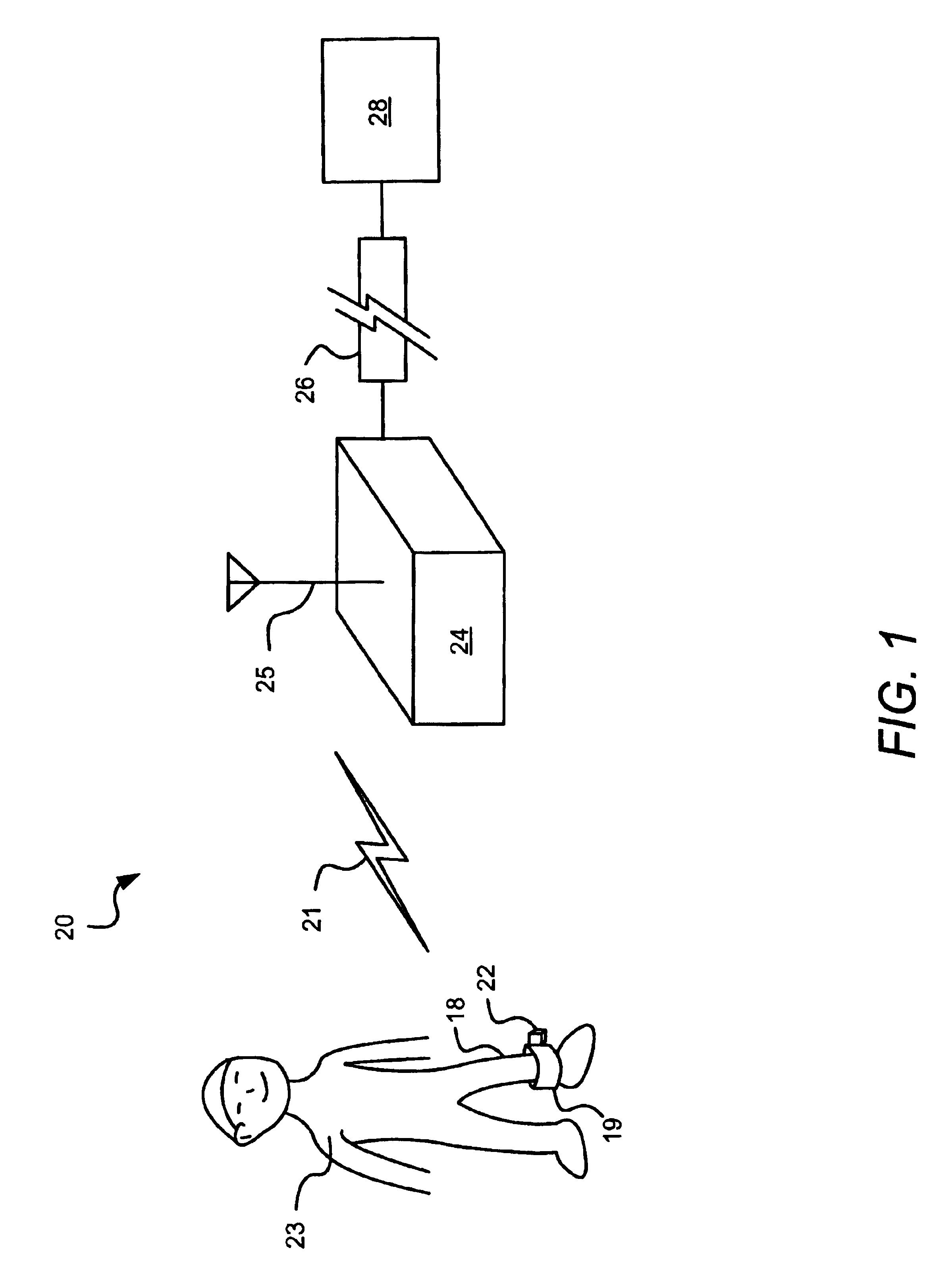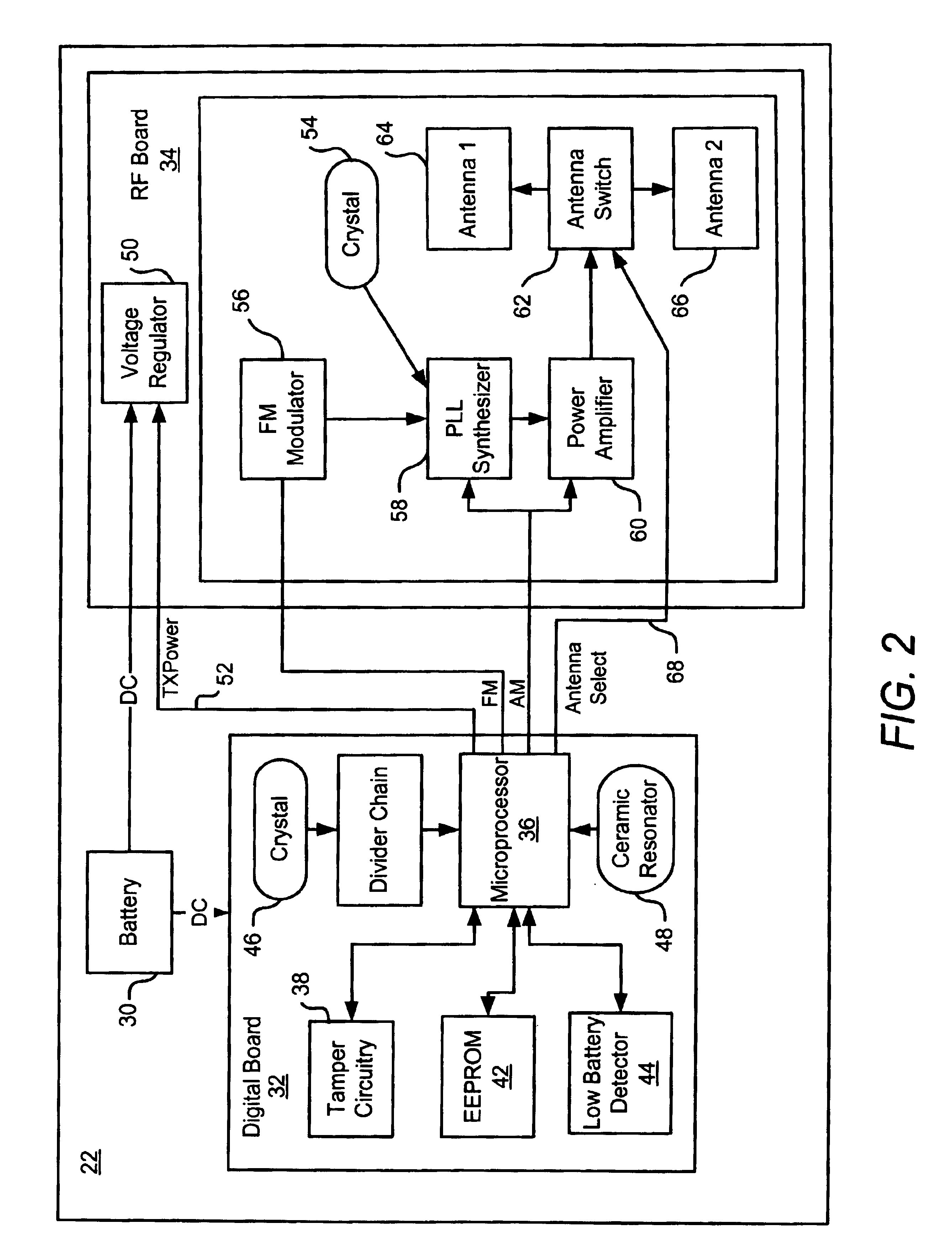Authentication techniques in a monitoring system
a monitoring system and authentication technique technology, applied in the direction of anti-theft devices, programs, instruments, etc., can solve the problems of ineffective monitoring, inconvenient monitoring, and the authentication scheme of signal transmission is too simple, so as to improve the ability to authenticate received transmissions
- Summary
- Abstract
- Description
- Claims
- Application Information
AI Technical Summary
Benefits of technology
Problems solved by technology
Method used
Image
Examples
second embodiment
the present invention may differ from the first embodiment in that a portion of the data bits provided in each transmission 21 may provide information representative of the location of the current transmission 21 within the pseudo-random pattern of time intervals between consecutive transmissions 21. Thus, in such a second embodiment, once a single transmission 21 has been received, the microprocessor 80 in the receiver (FMD) 24 will be able to determine, thus know, exactly where such transmission 21 and associated time interval combination is in the pattern of pseudo-randomly varying time intervals, and it will not have to track several transmissions 21 in order to make the same determination. For this reason, by the time four valid transmissions 21 have been received so that the transmitter 22 can be determined to be in range, the receiver (FMD) 24 will already be locked onto the transmitter 22. The data bits relating to the location in the pattern do not necessarily have to be re...
PUM
 Login to View More
Login to View More Abstract
Description
Claims
Application Information
 Login to View More
Login to View More - R&D
- Intellectual Property
- Life Sciences
- Materials
- Tech Scout
- Unparalleled Data Quality
- Higher Quality Content
- 60% Fewer Hallucinations
Browse by: Latest US Patents, China's latest patents, Technical Efficacy Thesaurus, Application Domain, Technology Topic, Popular Technical Reports.
© 2025 PatSnap. All rights reserved.Legal|Privacy policy|Modern Slavery Act Transparency Statement|Sitemap|About US| Contact US: help@patsnap.com



